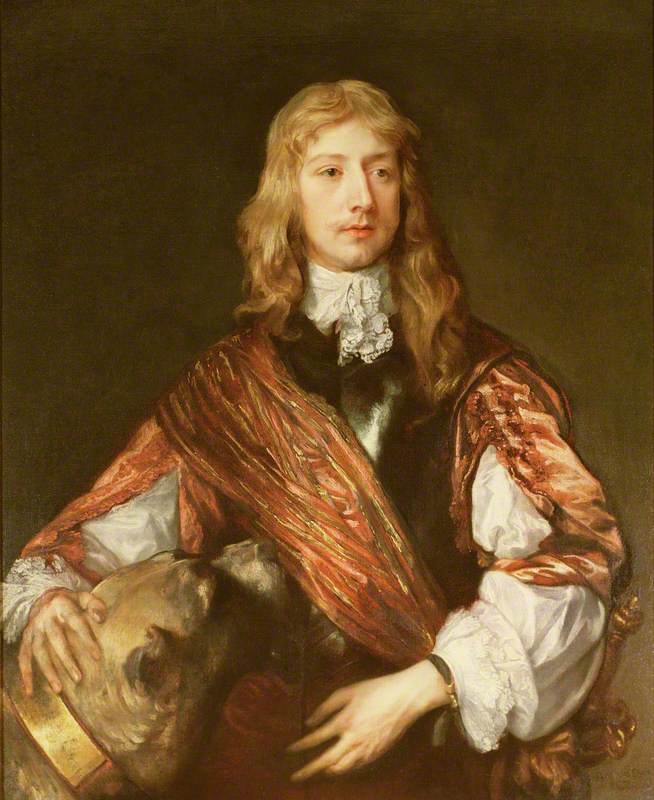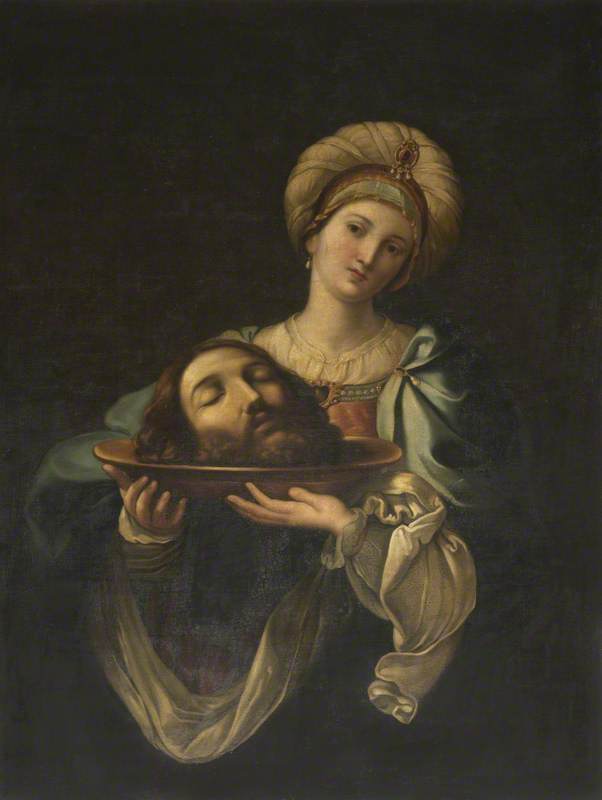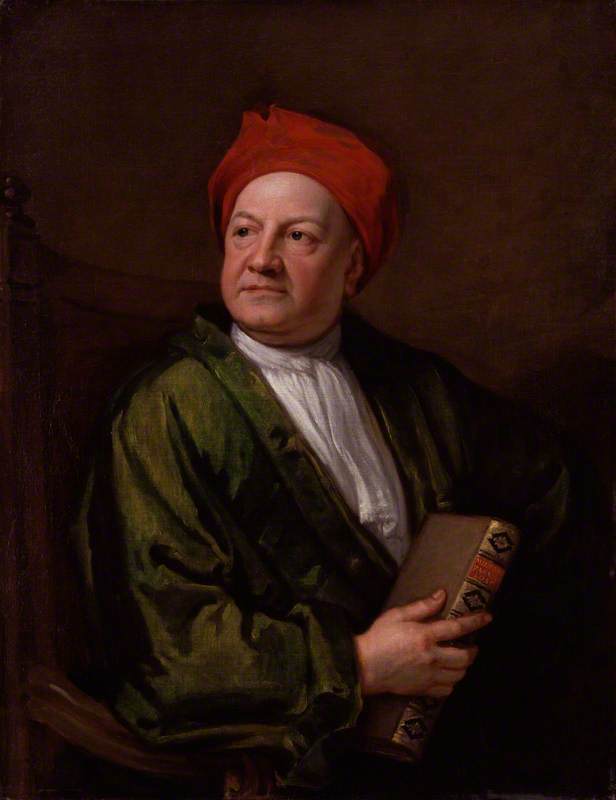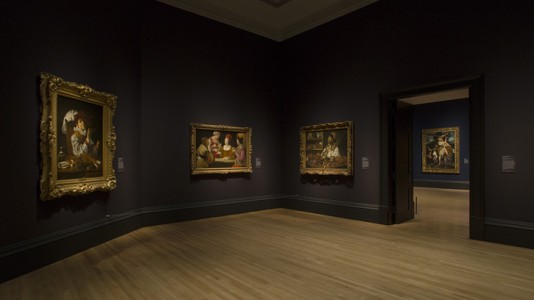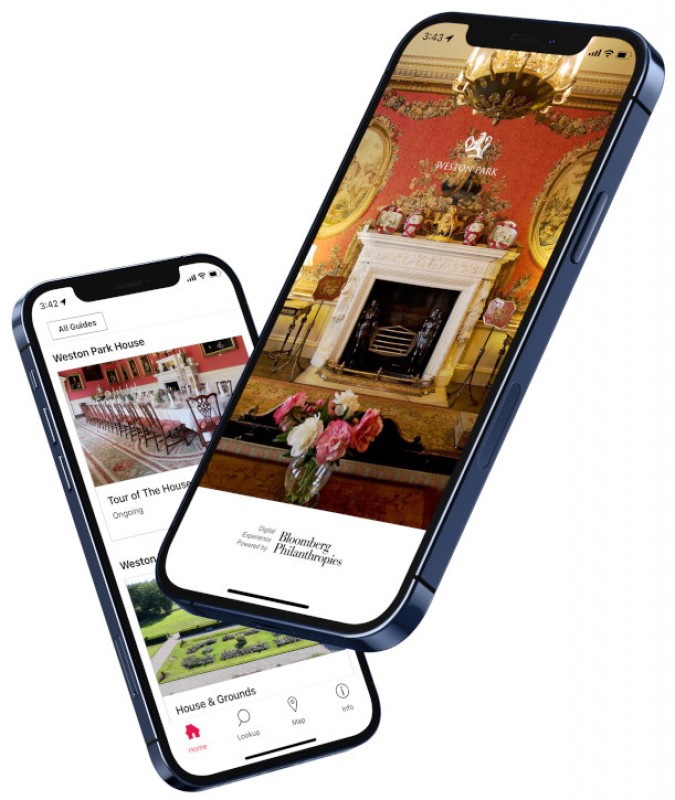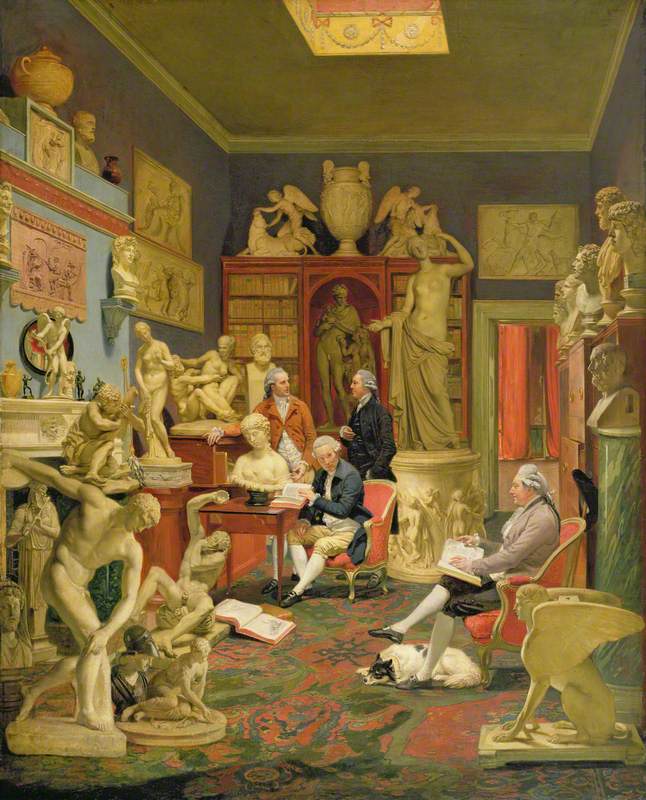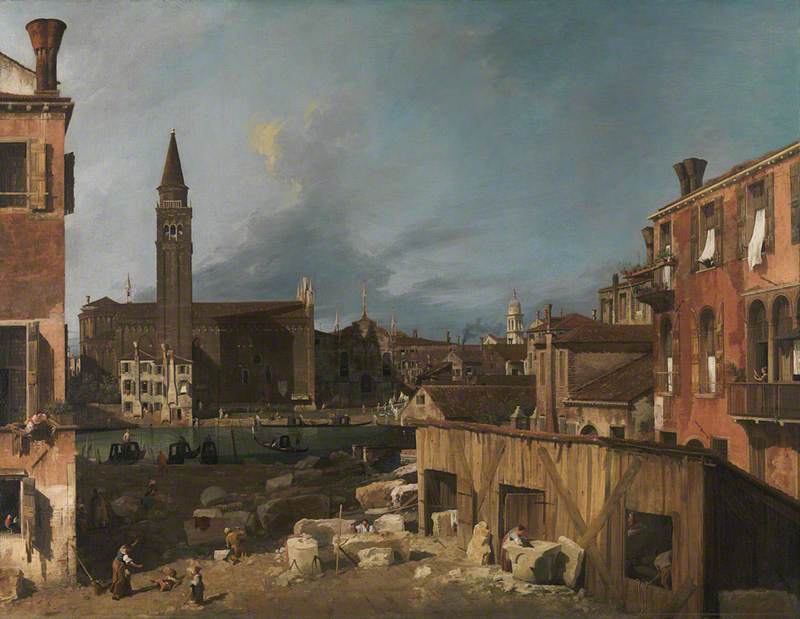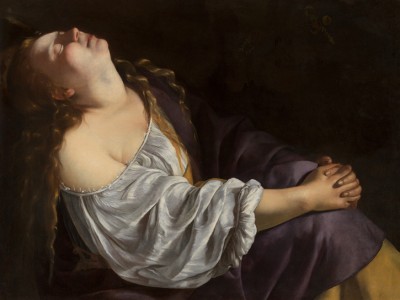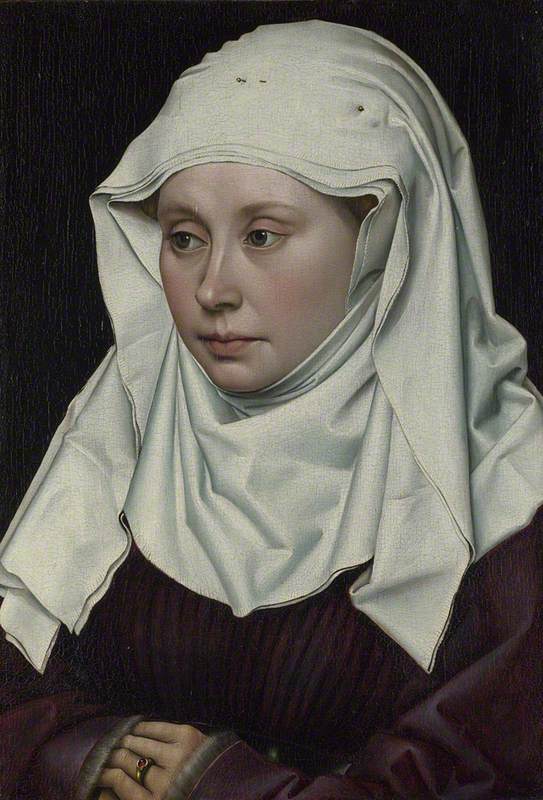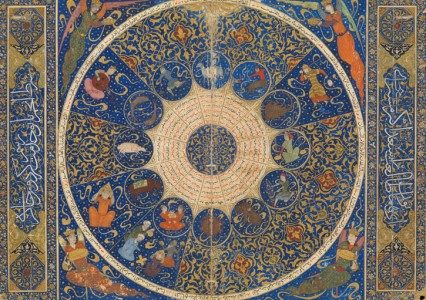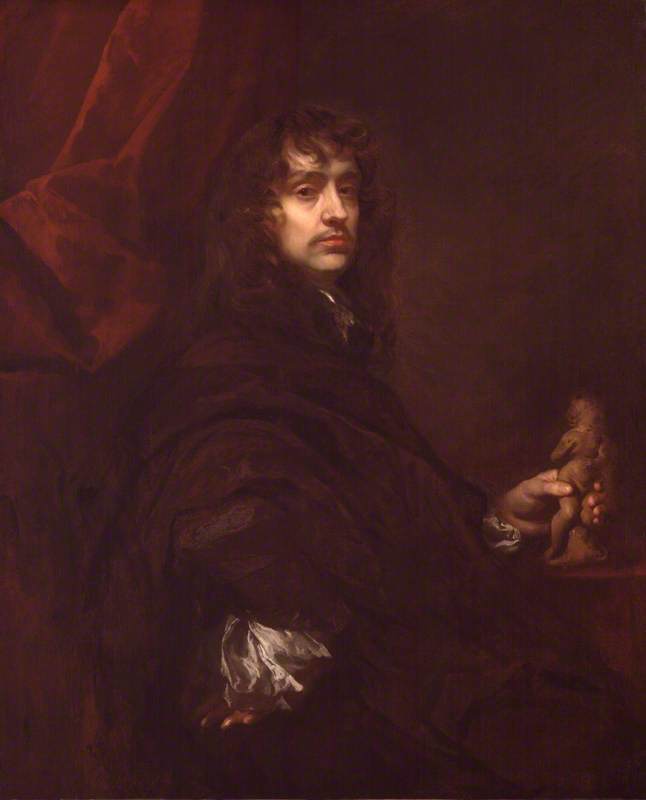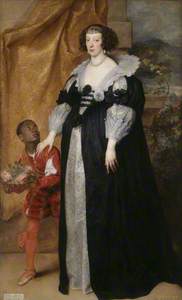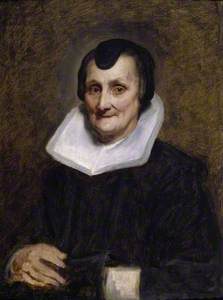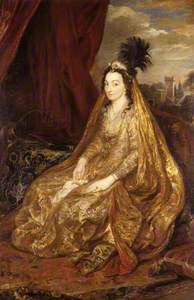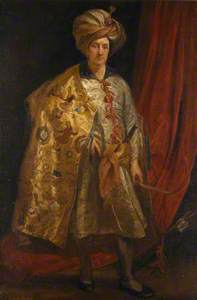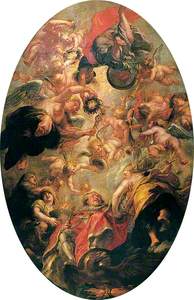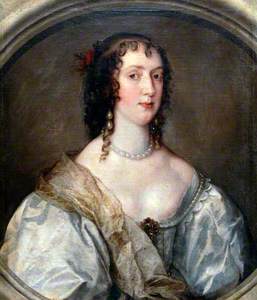Anthony van Dyck (1599–1641) was taught by Peter Paul Rubens and later settled in London to work at the court of Charles I. As a consequence, there are hundreds of paintings by, or after, Van Dyck in British collections – a testament to his enduring legacy as one of the best draughtsmen and portraitists of the seventeenth century.
Sir Anthony van Dyck (1599–1641)
c.1640
Anthony van Dyck (1599–1641) 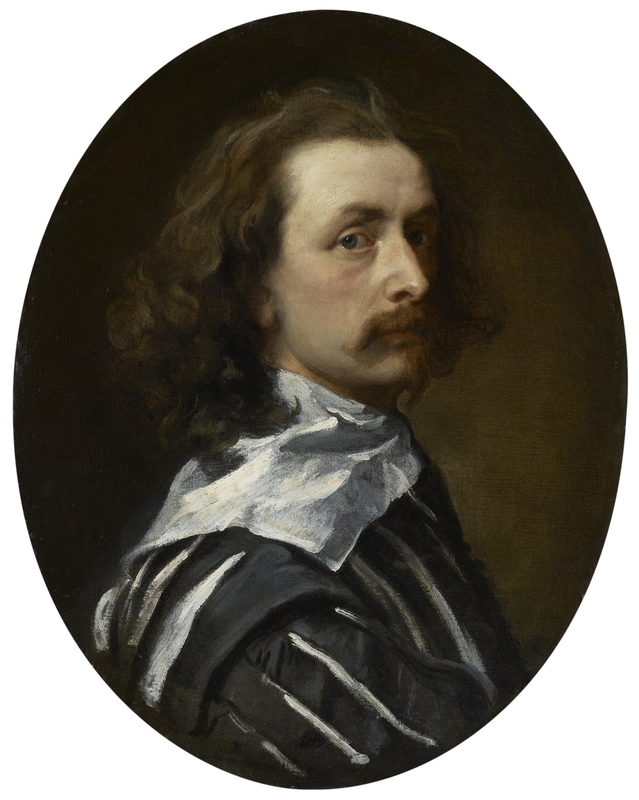
Born on 22nd March 1599 to a prosperous silk merchant family in Antwerp, Van Dyck was one of twelve children. He demonstrated a gift for painting from a young age and was encouraged to paint by his mother, who was herself a talented embroiderer.
His early introductions into the arts were under the instruction of the Baroque painter Hendrick van Balen.
Princess Henrietta of Lorraine (1611–1660), Attended by a Page
1634
Anthony van Dyck (1599–1641) 
By the time he was a teenager Van Dyck had excelled greatly as a painter, opened his own busy studio in Antwerp, and was receiving lucrative commissions. In 1618, he was admitted into the Antwerp Guild of Saint Luke, the most prestigious of painterly guilds at that time.
He then went onto work alongside Peter Paul Rubens – the most prominent painter in northern Europe.
In 1620, Van Dyck settled temporarily in England at the proposal of George Villiers, the Marquess (and later Duke) of Buckingham.
Said to be George Villiers (1592–1628), 1st Duke of Buckingham
c.1620–c.1700
Anthony van Dyck (1599–1641) (style of) 
Around this time, he created this portrait of the Circassian noblewoman, Teresa Sampsonia, Lady Shirley.
Teresa, or Teresia Sampsonia, Lady Shirley (1589–1668)
1622
Anthony van Dyck (1599–1641) 
She was the wife of Sir Robert Shirley, an English traveller and diplomat who had moved to Persia in 1598.
In 1621, Van Dyck settled at the court of James I, where he received £100 for his services. In London, he came face to face with works by the Italian master Titian, which had a huge influence on his style.
Van Dyck returned briefly to Flanders, before he was invited to train in Genoa, Italy, where he received important commissions from members of the Italian nobility.
Throughout 1621, he travelled through Italy, visiting the different principalities and their cities: Rome, Venice, Mantua, Milan, Turin, Padua and Palermo in Sicily.
Saint Sebastian Bound for Martyrdom
1620–1621
Anthony van Dyck (1599–1641) 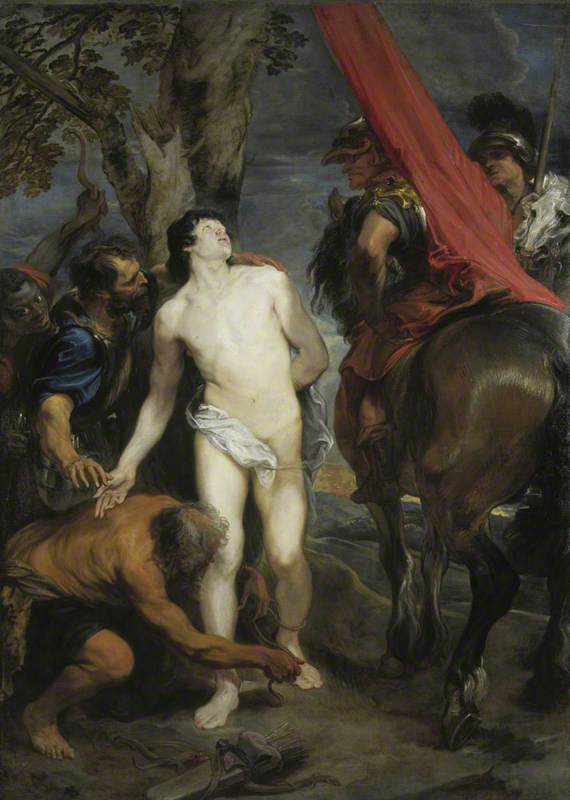
While in Genoa, Van Dyck painted this depiction of Christ for the noble Italian Balbi family. 'Ecce Homo' means 'behold the man' and echoes the words used by Pontius Pilate at the crucifixion of Christ.
In the late 1620s, Van Dyck returned to his hometown of Antwerp.
By this time, he had built many connections with wealthy Flemish patrons and following the advice of his teacher Rubens, he specialised in portraits, which quickly boosted his wealth.
After his travels around Italy, Van Dyck began specialising in printmaking. He created his famous Iconography, a series of prints of half-length portraits of influential patrons. A brilliant draughtsman, he popularised the medium and etched all eighteen portraits himself with exquisite detail, usually including delicate lines and dots.
Portrait of an Unknown 'Schepen' (Brussels magistrate)
c.1630
Anthony van Dyck (1599–1641) 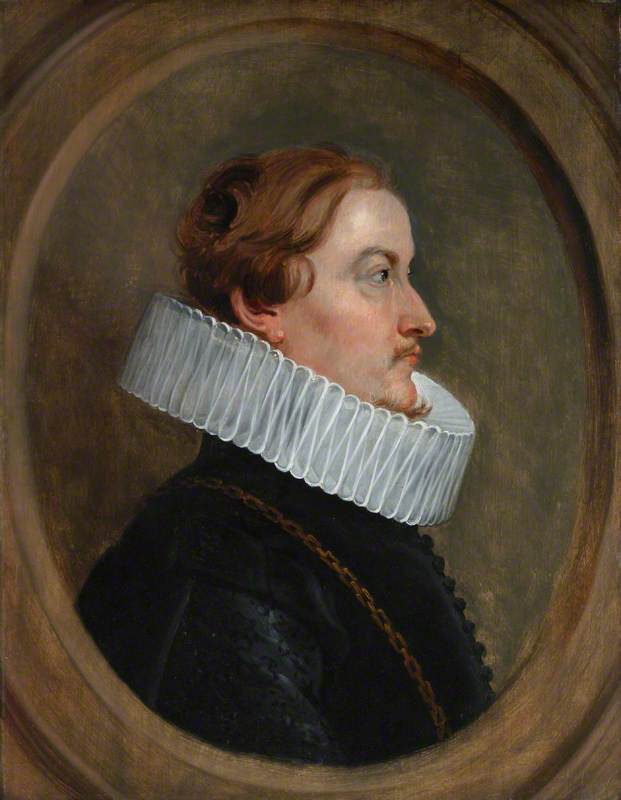
A new model for reproductive printmaking, Iconography boosted Van Dyck's fame considerably, as prints were easy to transport and disseminate widely across Europe. Art historians have noted that his reproduced prints allowed artists to copy directly from him over the following centuries – one reason why there are so many works 'after' or 'in the style of' Van Dyck.
The Infanta Isabella Clara Eugenia (1566–1633)
c.1630
Anthony van Dyck (1599–1641) 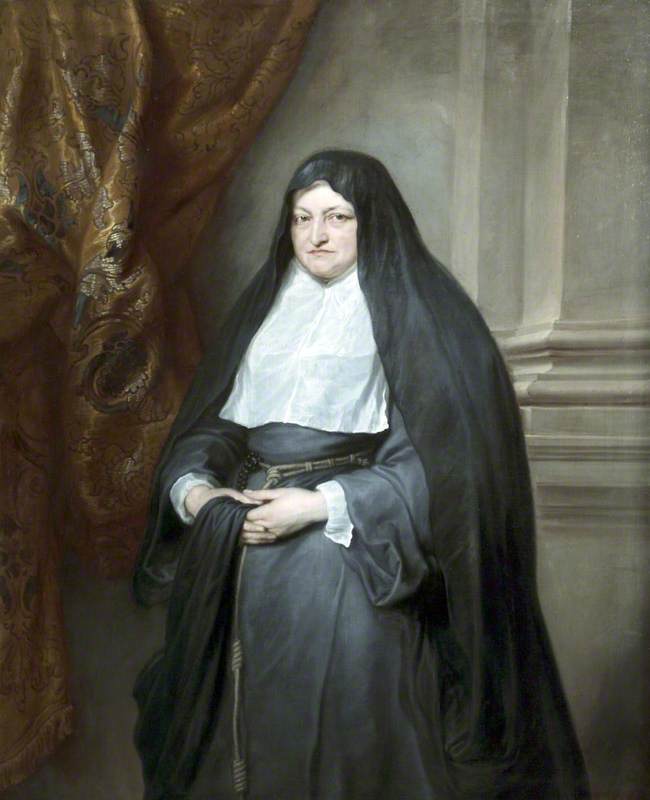
In 1630, he became the official court painter of Archduchess Isabella, the Habsburg Governor of Flanders. During this period, he turned his attention towards large-scale religious paintings and altarpieces.
Charles I (1600–1649), and Prince Charles (1630–1685)
c.1635
Anthony van Dyck (1599–1641) 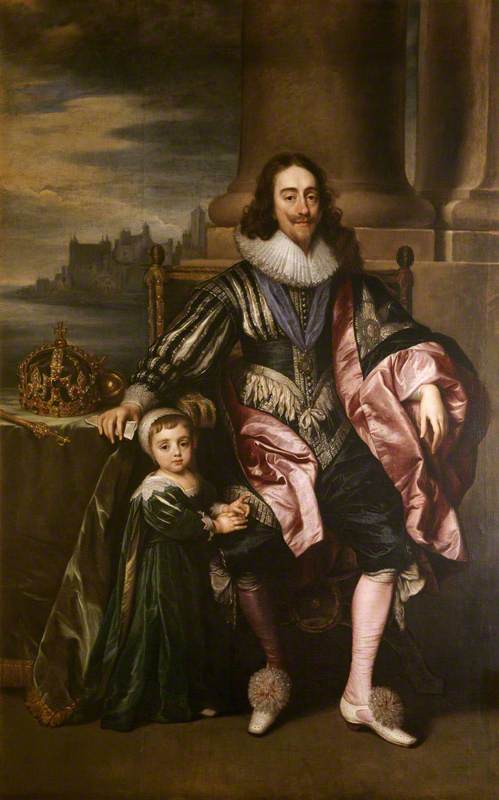
In 1632, Van Dyck received some important commissions from the English royal family. One was to paint the portrait of King Charles' sister, Queen Elizabeth of Bohemia.
In April 1632, he was invited back to the English court and was made the official portraitist of Charles I. He painted the king and his French wife, Queen Henrietta Maria.
Upon his return to England, he found success quickly. In July, he was knighted and officially became 'Sir Anthony van Dyck' (sometimes Anglicised to Vandyke).
It was also in 1632 that Van Dyck began one of his most memorable paintings, Self-Portrait with a Sunflower – the original of which is in a private collection.
A curious portrait loaded with artistic symbolism and a suggestion of the court painter's charisma, the work even hints at the emergence of Van Dyck's trademark pointy beard (later known as the 'Van Dyck beard').
As the official portraitist to the king, Van Dyck became one of the wealthiest artists in the country. The King gifted him a house on the banks of the River Thames, near Blackfriars, and a suite of rooms in Eltham Palace, Greenwich.
His London studio was a busy, bustling centre of production with many Flemish assistants, including artists like Adriaen Hanneman. There, he mostly focused on creating prints and painted portraits. The studio was visited regularly by both the King and Queen.
Between 1635 and 1636, he created one of his most iconic paintings, Charles I in Three Positions. It was painted for the sculptor Gian Lorenzo Bernini in Rome who was preparing to create a bust of Charles I. The original painting has been in the Royal Collection since 1822, but many copies have been made through the centuries of this famous work.
Lady Elizabeth Thimbelby and Dorothy, Viscountess Andover
about 1637
Anthony van Dyck (1599–1641) 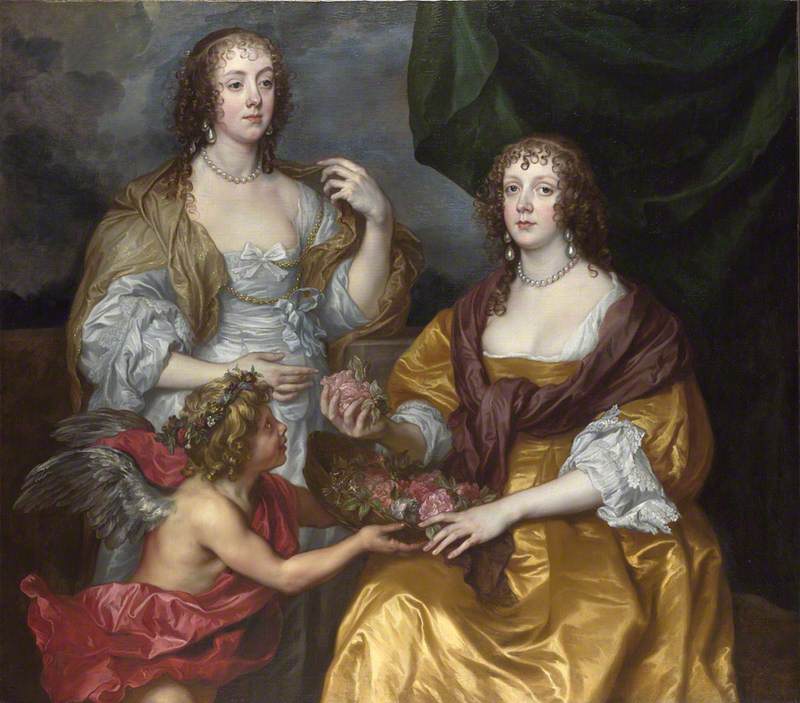
In 1638, Van Dyck was forced into a marriage with Mary Ruthven when pressurised by Charles I. They had a child together in 1641, though it was widely known that Van Dyck had many mistresses, including his muse and model, Margaret Lemon.
In the 1630s, Van Dyck tried to persuade Charles to commission him to paint The Banqueting House in Whitehall, which was designed by the architect Inigo Jones during the reign of James I. Completed in 1622, it later became the place where his son, Charles I was beheaded for treason in 1649.
The Apotheosis of James I
c.1632–1634
Peter Paul Rubens (1577–1640) (and studio) 
In the end, it was Van Dyck's teacher Rubens who was commissioned to paint the famous ceiling work The Apotheosis of James I – commissioned by Charles I to glorify his father. It was one of the last paintings Charles I saw before he attended his own execution.
Princess Mary Stuart (1631–1660)
c.1637
Anthony van Dyck (1599–1641) 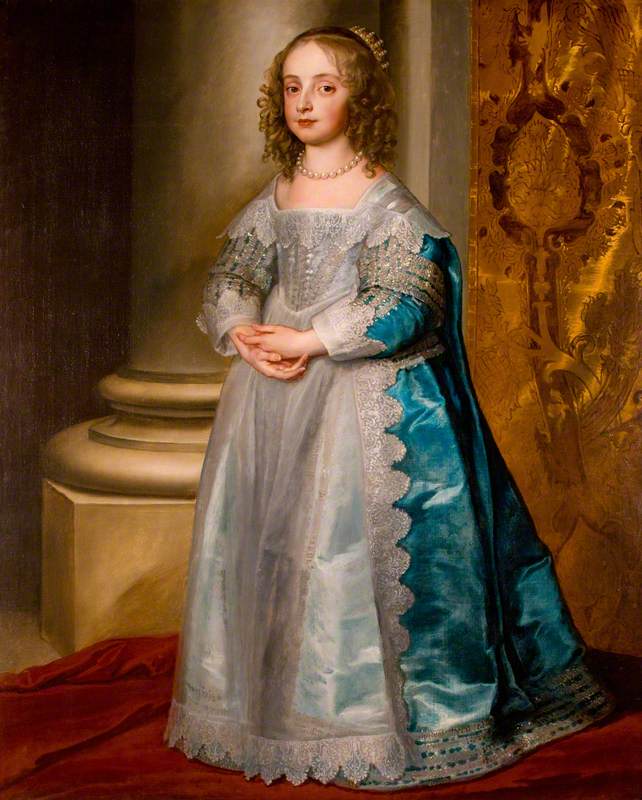
Charles I was Van Dyck's most important patron, and Van Dyck famously also painted the monarch's children. Here is a portrait of Princess Mary Stuart, which can be found in Hampton Court Palace.
Alexander Henderson (c.1583–1646), Presbyterian Divine and Diplomatist
c.1641
Anthony van Dyck (1599–1641) 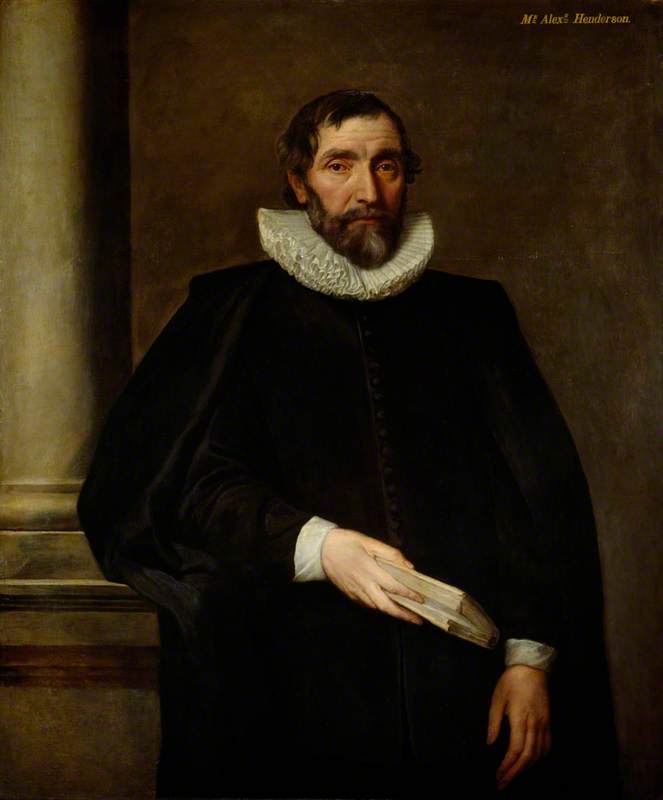
In December 1641 Van Dyck fell ill and died, at the age of just 42. The same year, he had created this painting of Alexander Henderson, one of the most important figures in the Church of Scotland in the seventeenth century.
With his royal connections, and years spent in Britain, Sir Anthony van Dyck remains an important figure in the nation's art history. As a mark of his importance, the artist was buried in London's St Paul's Cathedral, in the heart of his adopted home.
Lydia Figes, Content Creator at Art UK


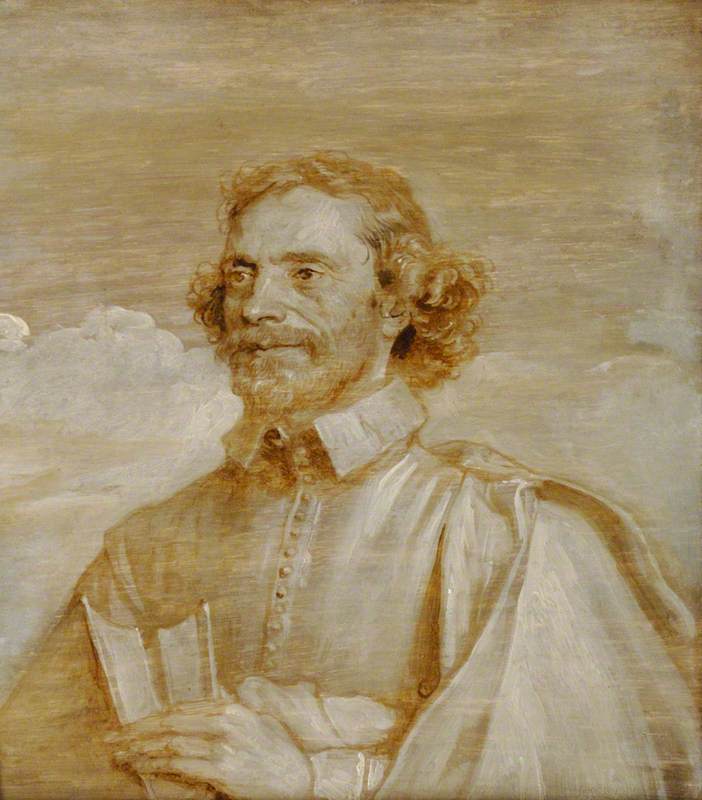
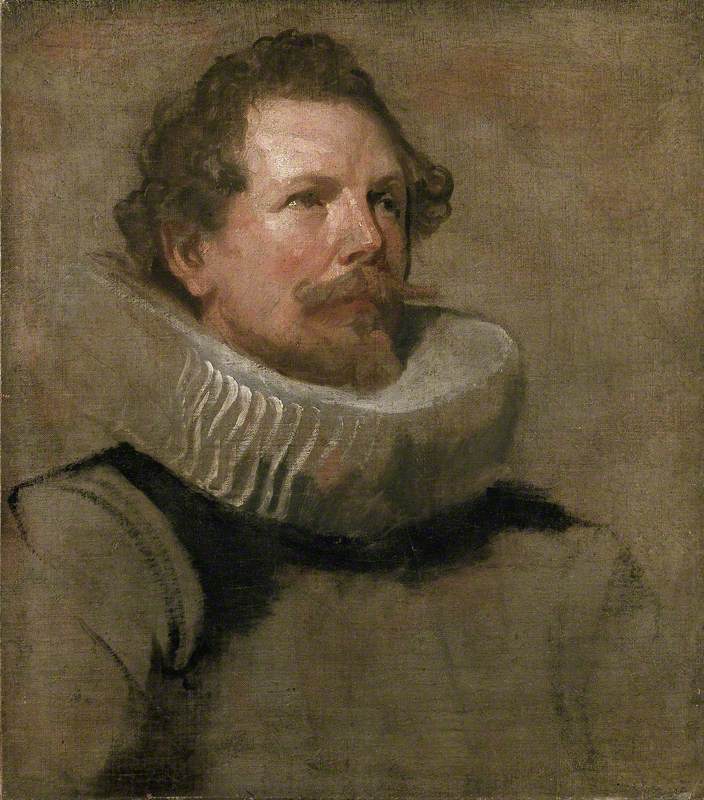
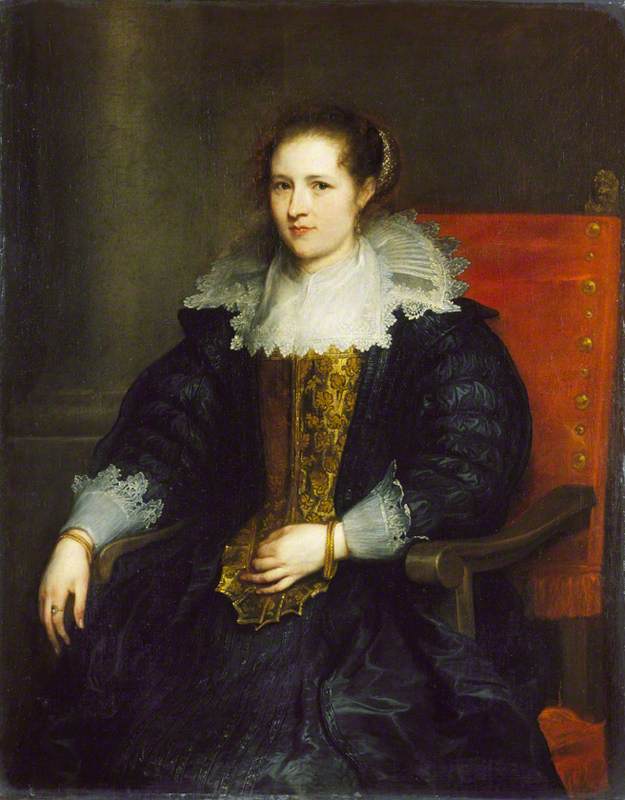
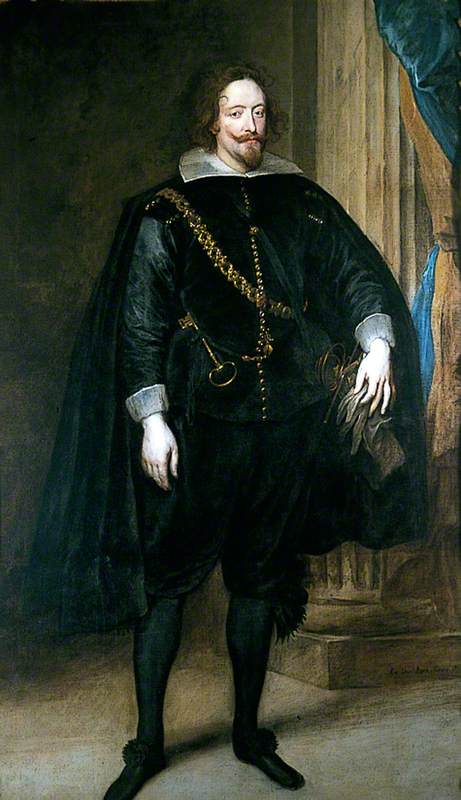
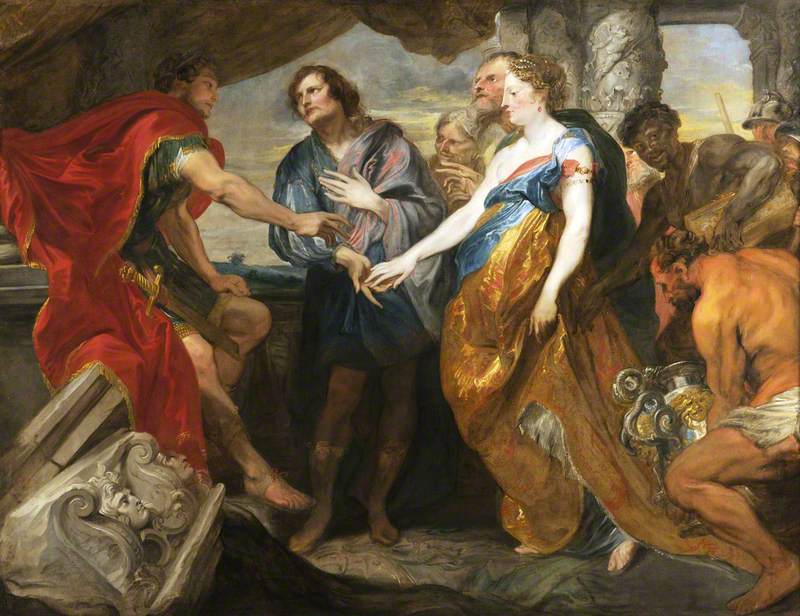
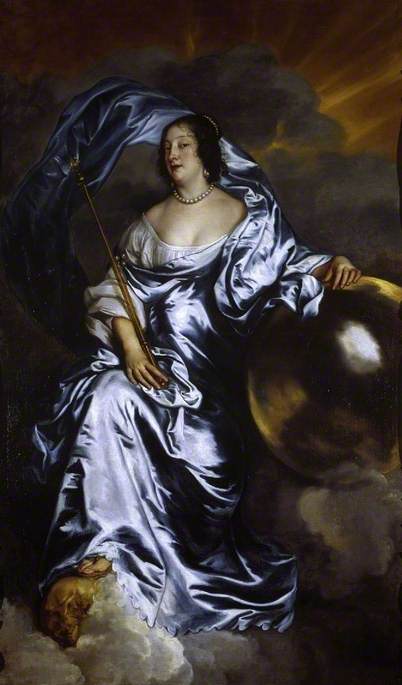
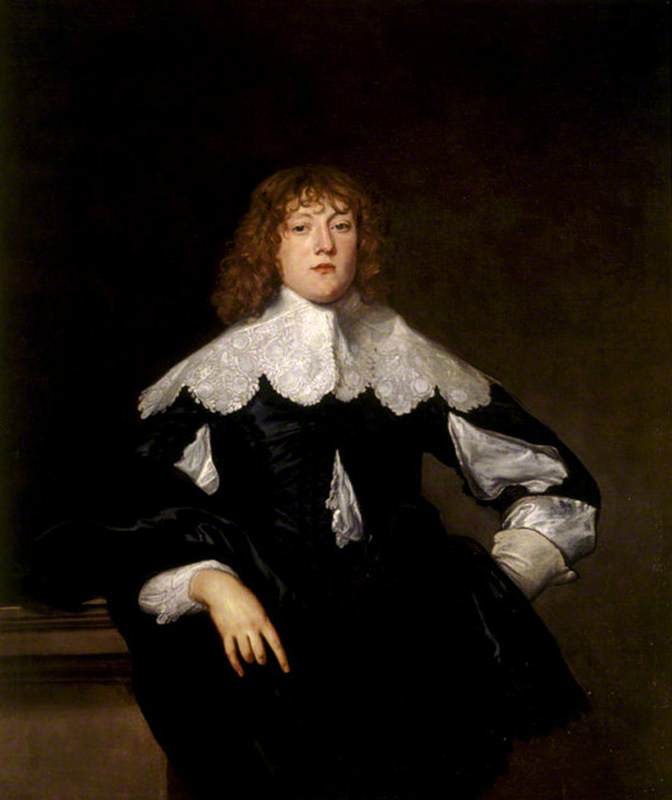

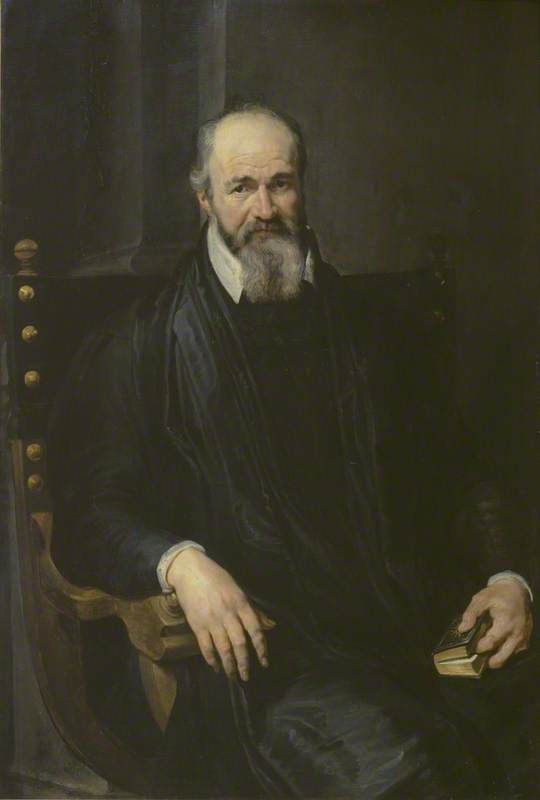
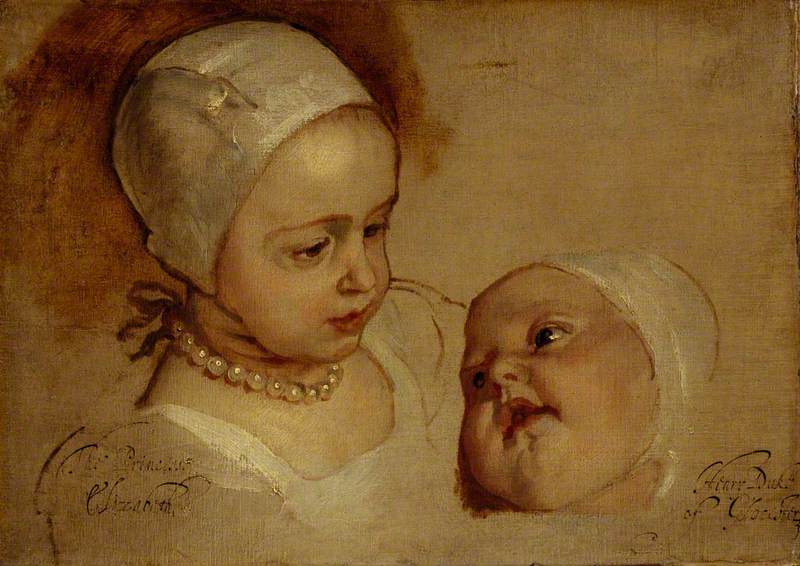
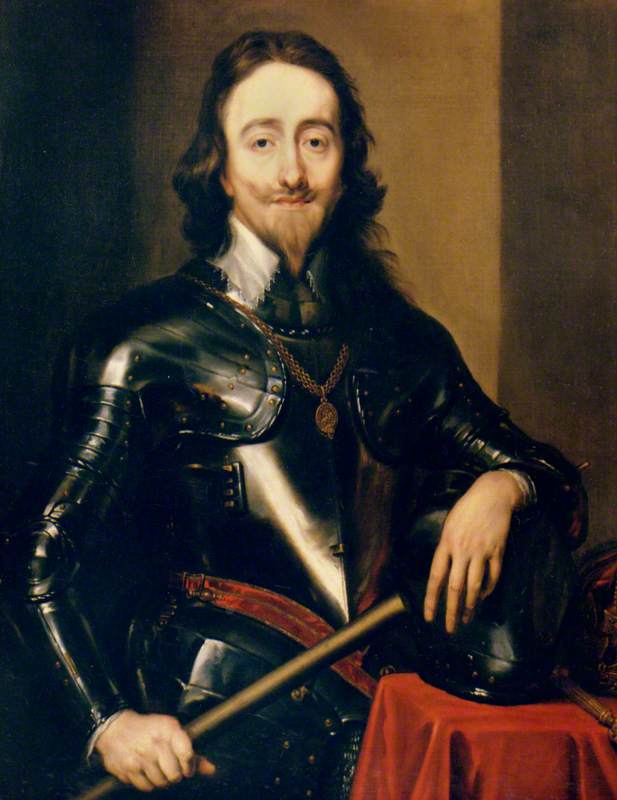


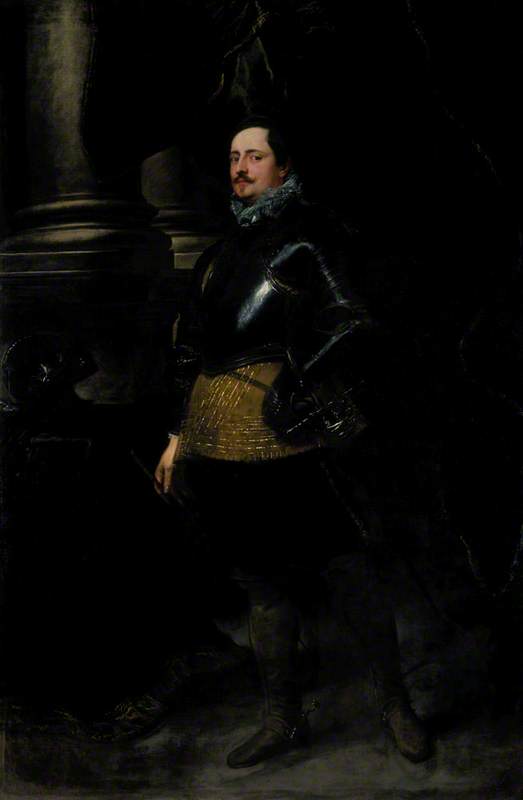
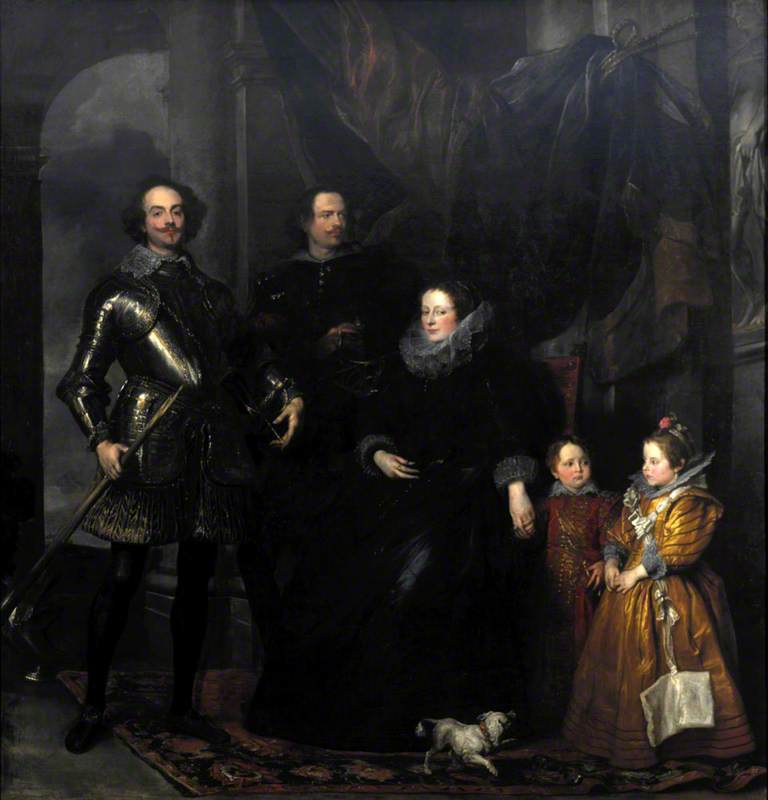
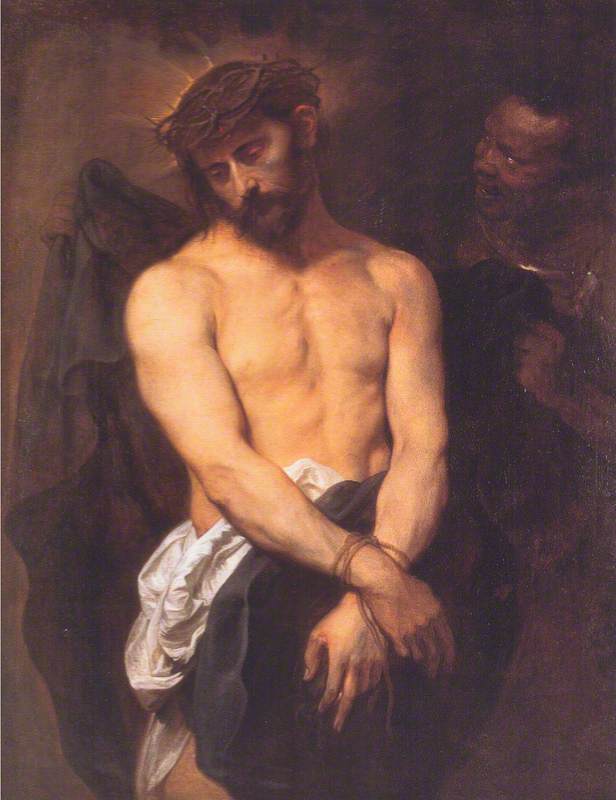
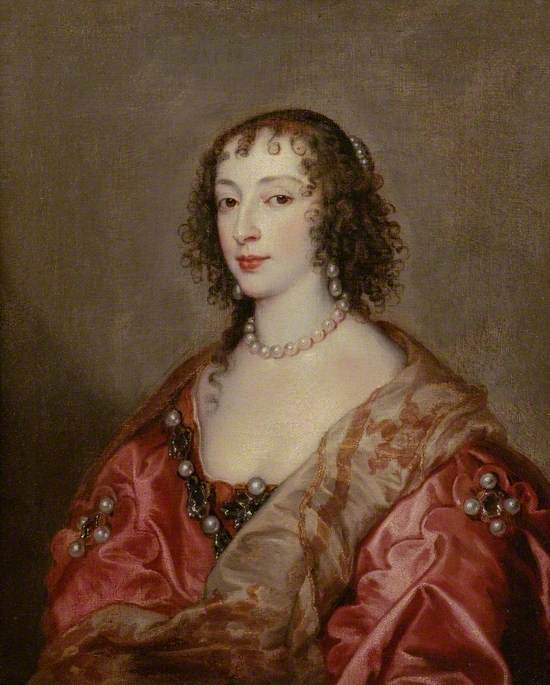
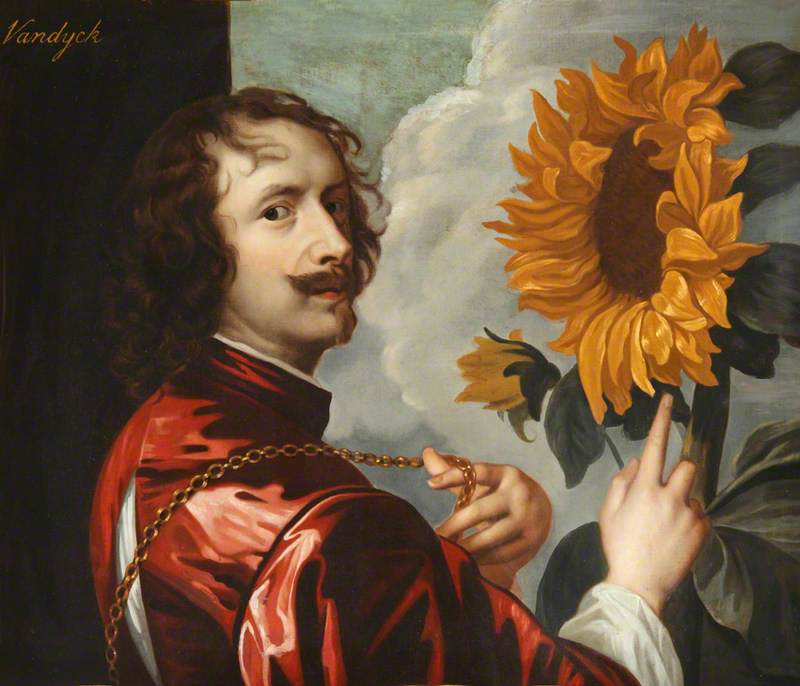
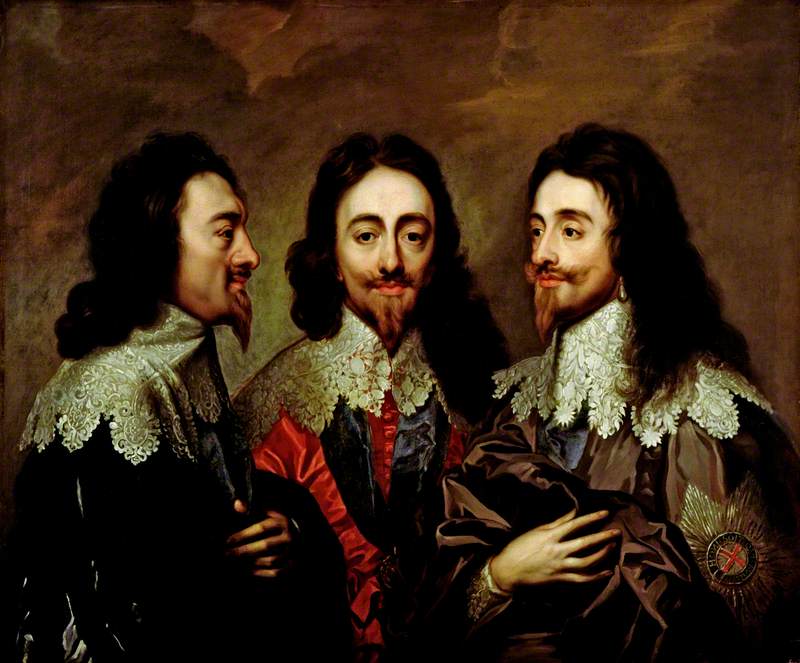
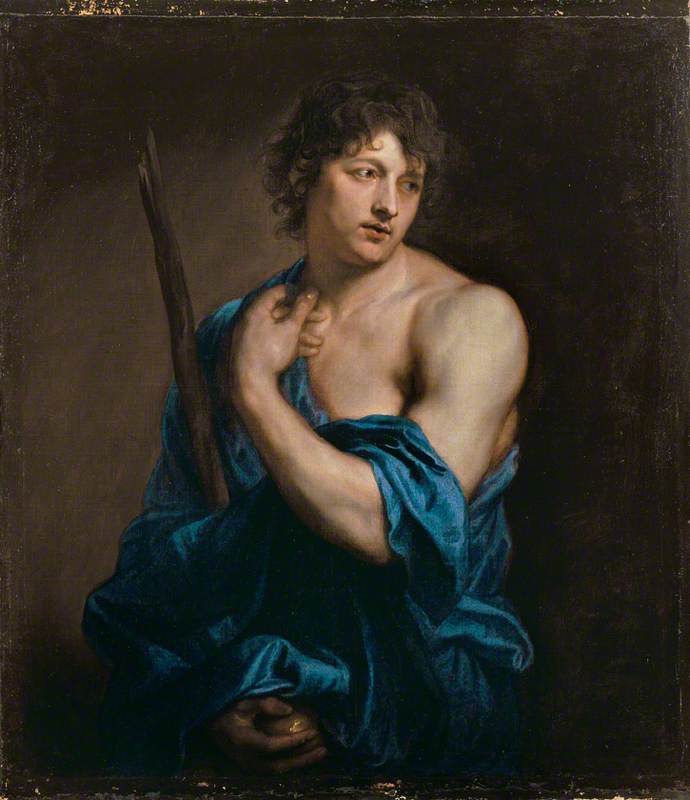




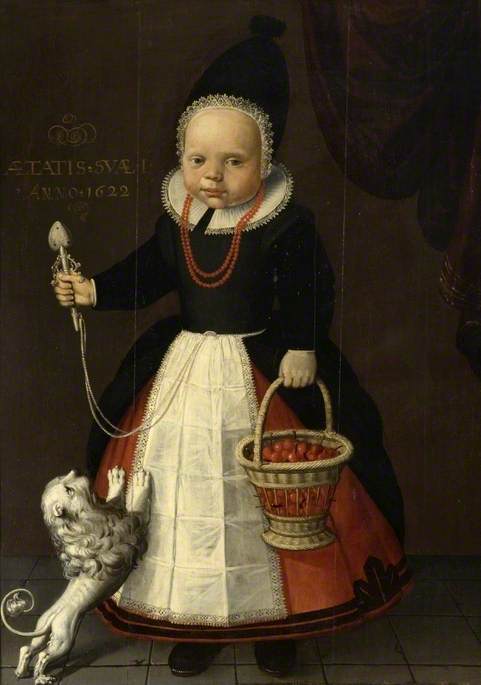
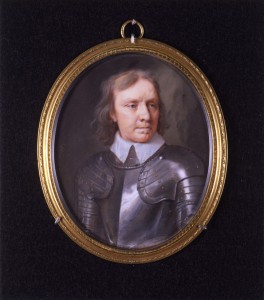

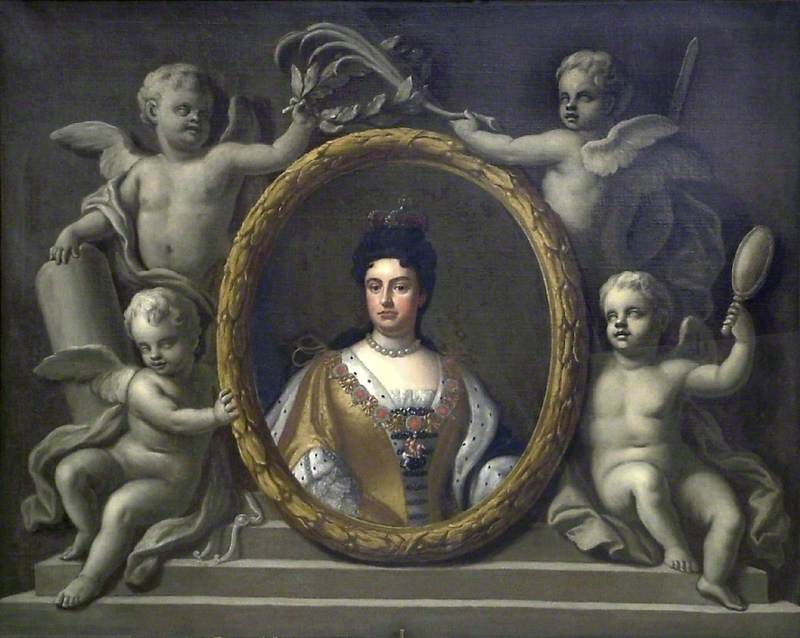
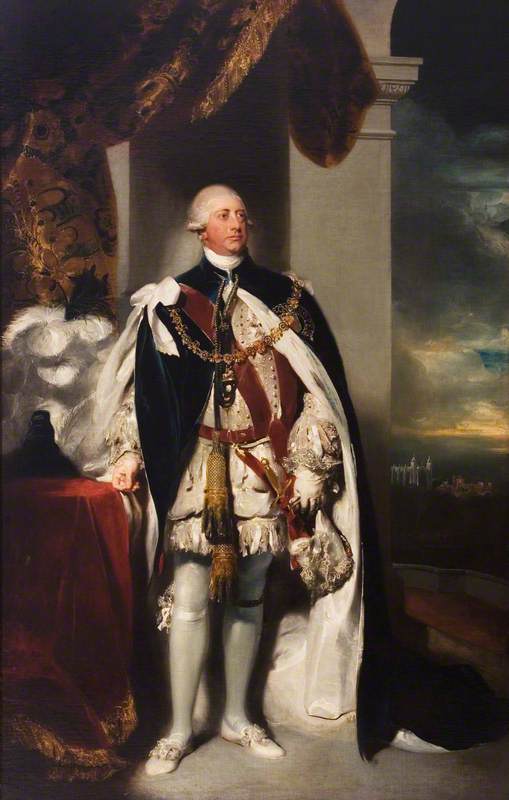

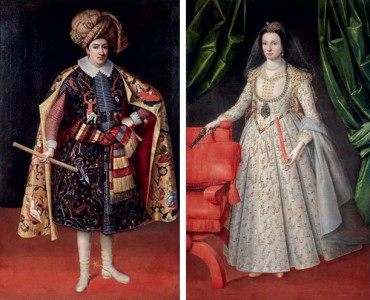


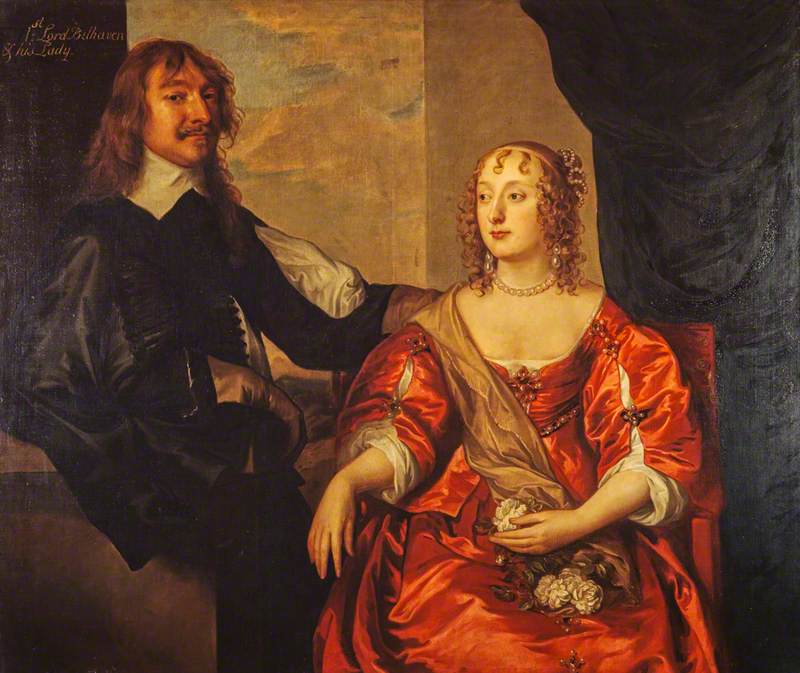
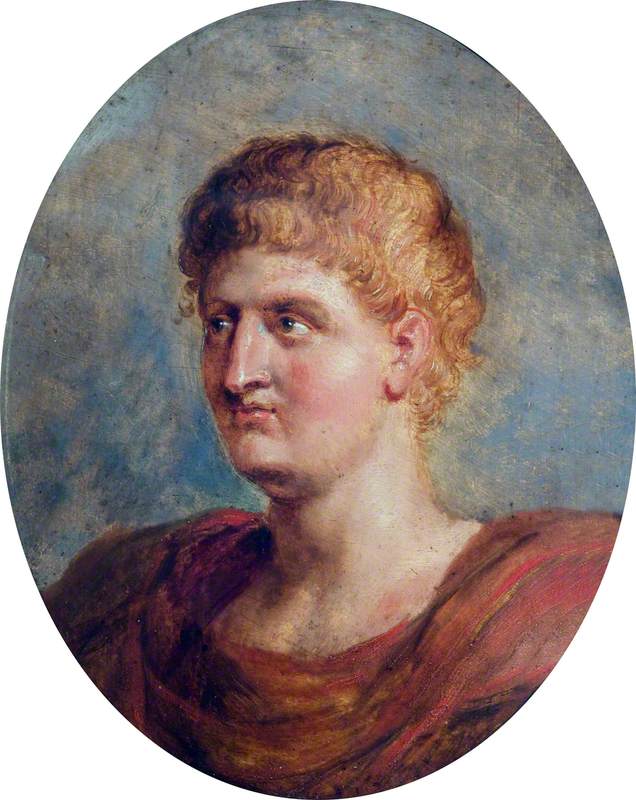
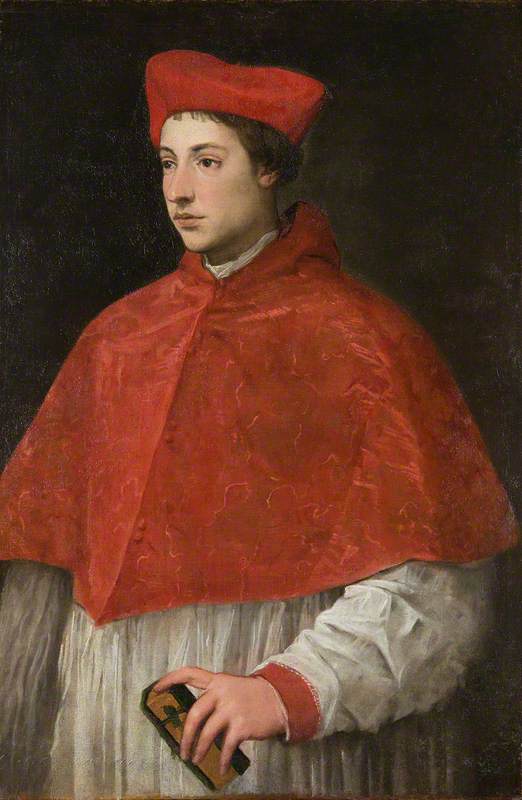
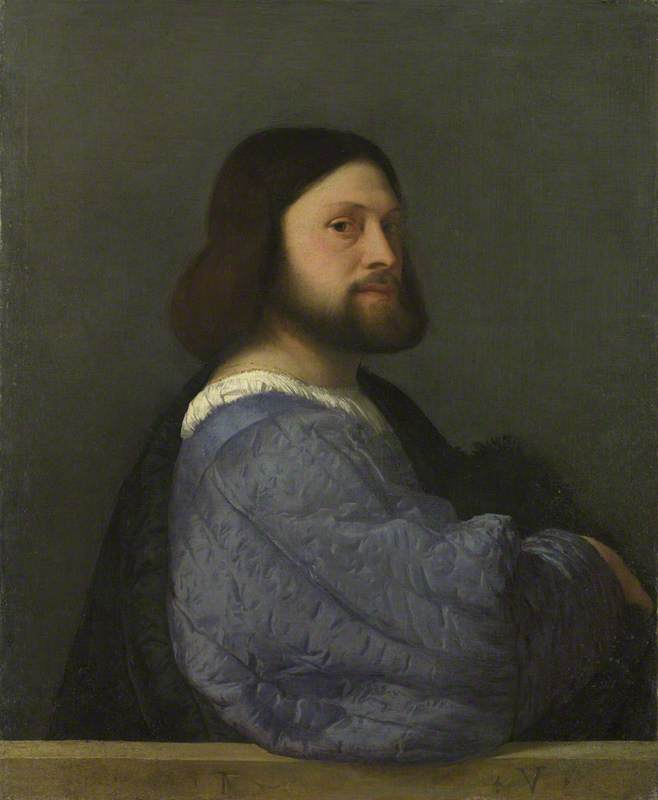
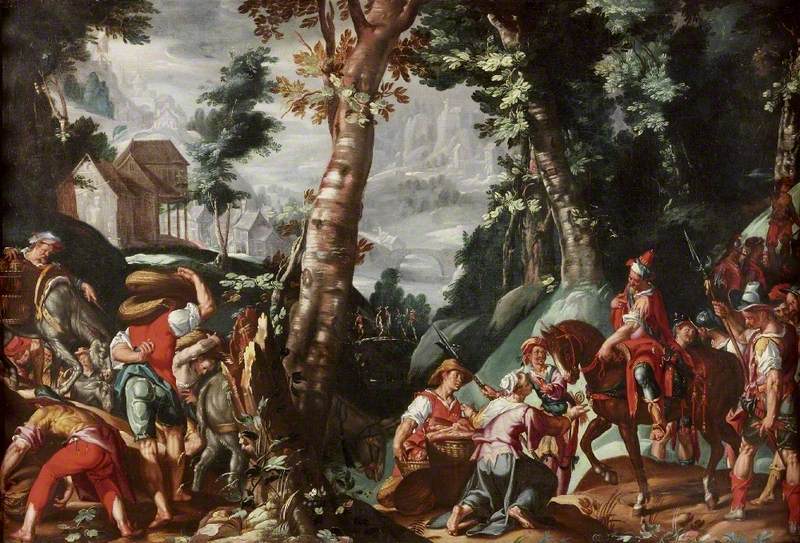
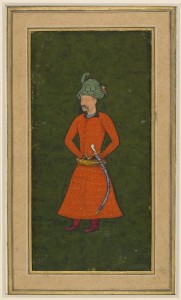
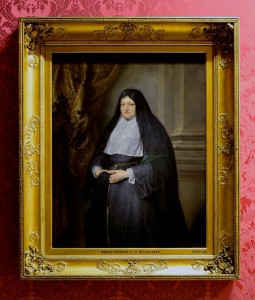
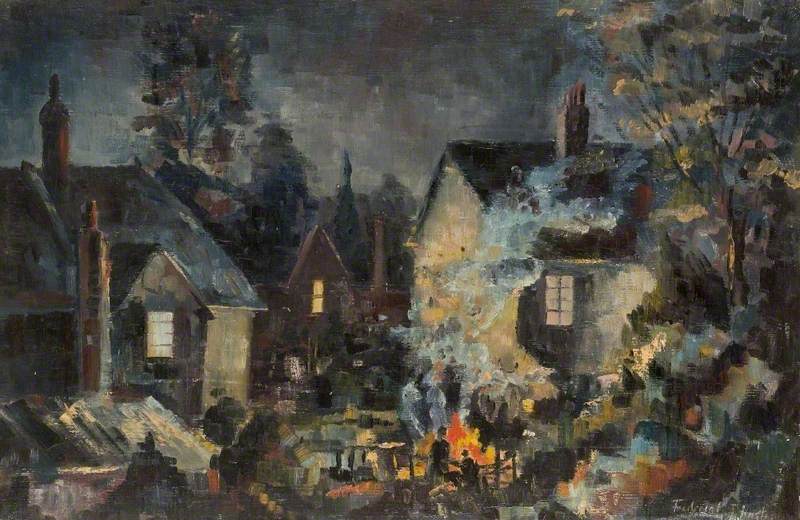



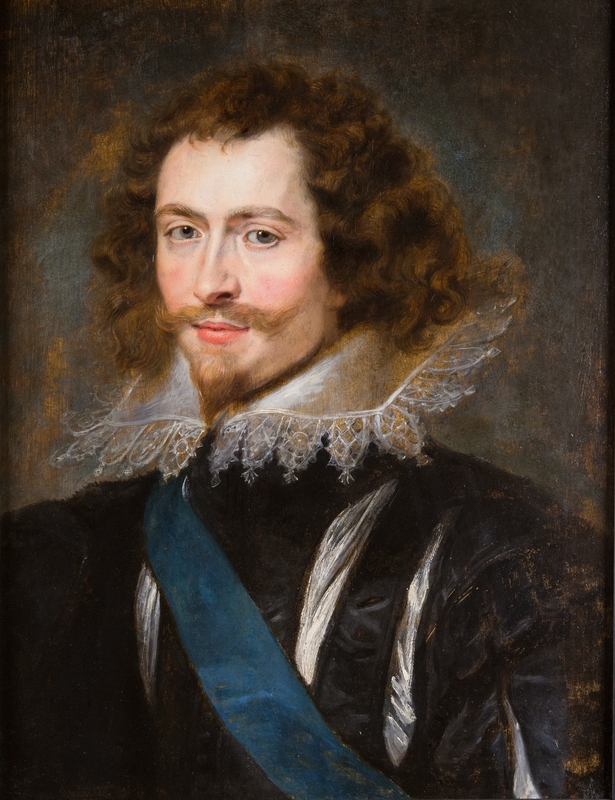
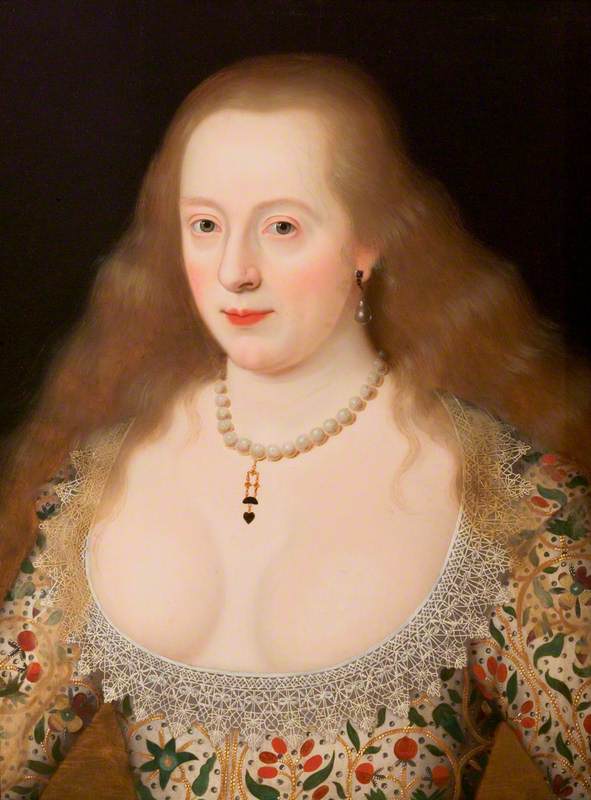

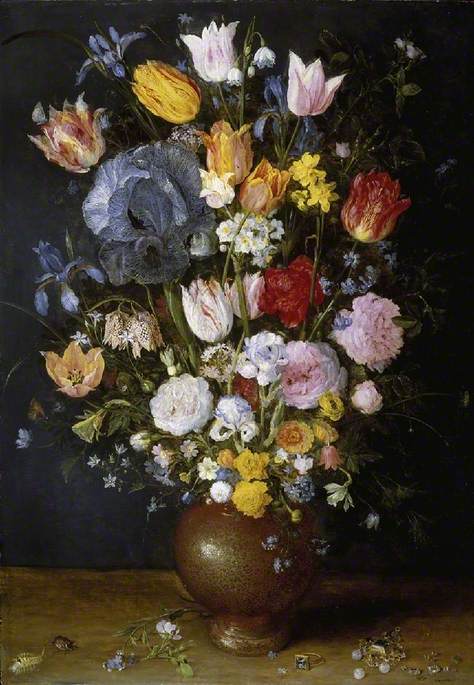
.jpg)


